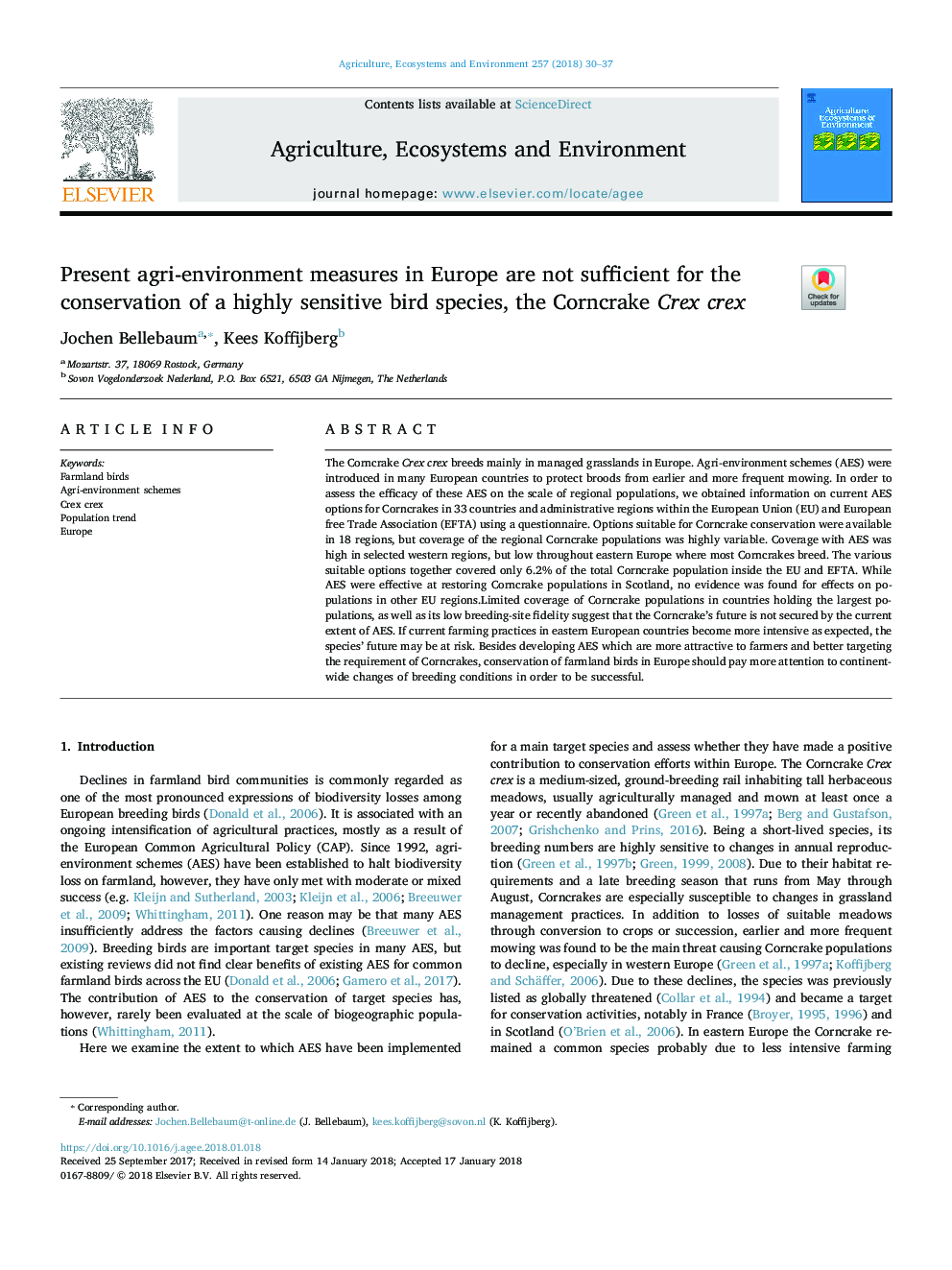| Article ID | Journal | Published Year | Pages | File Type |
|---|---|---|---|---|
| 8487135 | Agriculture, Ecosystems & Environment | 2018 | 8 Pages |
Abstract
The Corncrake Crex crex breeds mainly in managed grasslands in Europe. Agri-environment schemes (AES) were introduced in many European countries to protect broods from earlier and more frequent mowing. In order to assess the efficacy of these AES on the scale of regional populations, we obtained information on current AES options for Corncrakes in 33 countries and administrative regions within the European Union (EU) and European free Trade Association (EFTA) using a questionnaire. Options suitable for Corncrake conservation were available in 18 regions, but coverage of the regional Corncrake populations was highly variable. Coverage with AES was high in selected western regions, but low throughout eastern Europe where most Corncrakes breed. The various suitable options together covered only 6.2% of the total Corncrake population inside the EU and EFTA. While AES were effective at restoring Corncrake populations in Scotland, no evidence was found for effects on populations in other EU regions.Limited coverage of Corncrake populations in countries holding the largest populations, as well as its low breeding-site fidelity suggest that the Corncrake's future is not secured by the current extent of AES. If current farming practices in eastern European countries become more intensive as expected, the species' future may be at risk. Besides developing AES which are more attractive to farmers and better targeting the requirement of Corncrakes, conservation of farmland birds in Europe should pay more attention to continent-wide changes of breeding conditions in order to be successful.
Related Topics
Life Sciences
Agricultural and Biological Sciences
Agronomy and Crop Science
Authors
Jochen Bellebaum, Kees Koffijberg,
